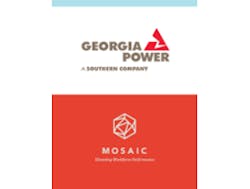2014 Benchmark Study Reveals Utilities Increasing Value to Customer Through Technology and Training Advancements
Renton, WA — August 14, 2014 — Technology has helped the utility industry become more responsive to customers than ever before, including initiatives to help utilities understand what customers want by way of convenience, flexibility and self-service.
That’s according to the results of the 2014 Customer Care Benchmark Report, sponsored by Georgia Power and conducted by Mosaic, a national training and workforce consulting company in the utility and oil & gas industry. The report, focusing on Customer Care initiatives and future trends, and was released this week.
Key executives from Customer Care units representing nine utilities across the U.S. were interviewed about the current status of Customer Care initiatives and future trends of this vital segment in their industry.
“With changing market dynamics and customer expectations, one of the key business impacts to utilities will be the need to invest more dollars in technology and training,” said Latanza Adjei, director of Georgia Power’s Customer Care Center. “By fully leveraging technology, contact centers can provide more value to the customer, by offering options which fully address our customers’ need for more information, convenience and control.
“Since more customers are choosing to conduct simple transactions with their utility via the self-service channels, customer contacts via phone tend to be more complex, so employees need additional training and knowledge-based tools that provide personalized, just-in-time information,” Adjei added.
The study revealed that utilities continue to increase their use of IVR (Interactive Voice Response). Current utilization ranges from 20 to 38 percent, with the goal of increasing utilization from 40 to 50 percent. Utilities reported that increase utilization of IVR reduces customer service expense and increases customer satisfaction when successfully implemented.
Consumers are watching other industries provide easier and more convenient ways to pay a bill or schedule a service call, and they want that same flexibility from their utility.
As a result, more than 70 percent of participating utilities reported being actively engaged in improving their new hire training efforts and updating technology. Utilities want to move from a simple transaction source to a knowledge provider for customers.
Tom Karcz, Mosaic director of Customer Experience and Billing, said utilities are now managing beyond the meter to add value for their customers, and moving to technology-related services rather than just a paper bill.
“More and more customers are wanting to be informed and have choices in how they interact with utility companies,” Karcz said. “And utilities are listening.”
Another trend growing in the utility industry is the gamification of Customer Care call centers. Gamification is the process in which normal work processes are turned into competitive activities, transforming goals into awards to build a sense of camaraderie among co-workers. The concept was borrowed from video games.
To read the benchmark report: http://themosaiccompany.com/wp-contenthttp://www.gradingandexcavation.com/Uploads/2014/08/2014-Customer-Care-Benchmark-Report-for-our-website_-FINAL.pdf
About Georgia Power
Georgia Power is the largest subsidiary of Southern Company (NYSE: SO), the premier energy company serving the Southeast through its subsidiaries. Value, Reliability, Customer Service and Stewardship are the cornerstones of the company’s promise to 2.4 million customers in all but four of Georgia’s 159 counties. Consistently recognized as a leader in customer service, Georgia Power was recently ranked highest in overall business customer satisfaction among large utilities in the South by J.D. Power and Associates. For more information, visit www.GeorgiaPower.com.
About Mosaic
Mosaic is a training and workforce consulting firm, providing custom solutions to utilities and oil & gas companies. The expertise and experience of our people–our most valuable asset–helps companies reach and sustain the highest levels of workforce competency, quality, safety and efficiency. We prepare employees for critical business challenges, new technologies, process changes and evolving compliance requirements. Our tailor-made, pragmatic solutions improve workforce performance and create change to better support a company’s mission and goals. themosaiccompany.com.


